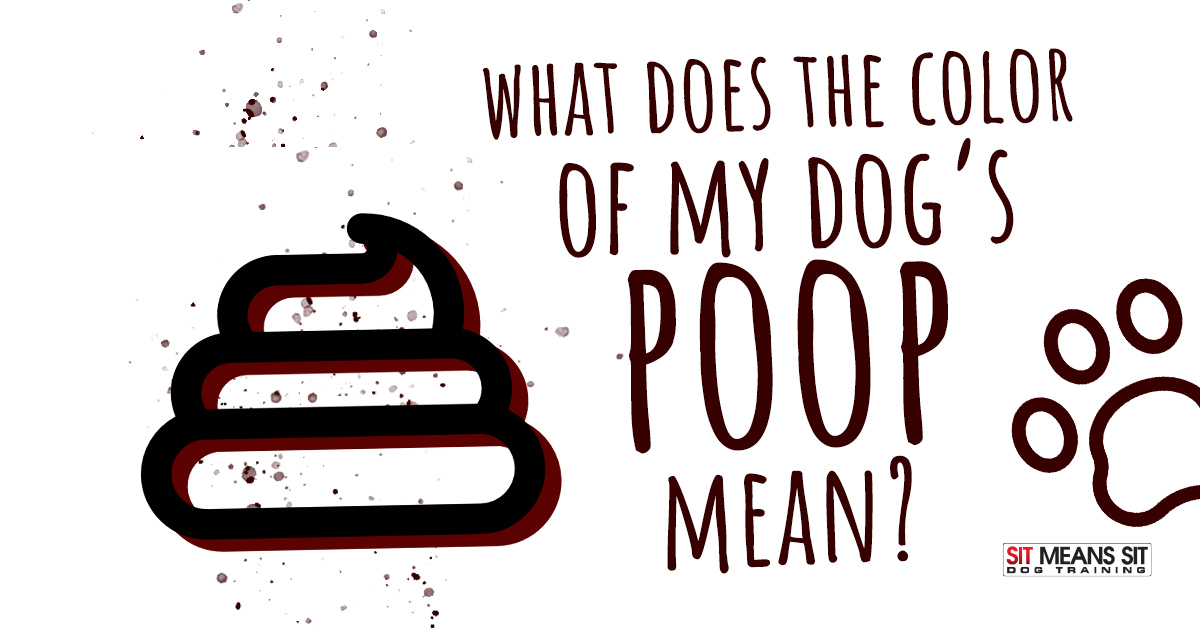
What Does My Dog’s Poop Color Mean?
Your dog’s poop color can tell you a lot about what might be going on internally. The longer you have your dog, the more you will notice what a normal stool looks like for him. Although a healthy poo can vary from breed to breed and based on their diet, a “normal” stool is generally a medium brown and solid enough that it isn’t liquidy but not so soft that it isn’t too difficult to pass. Color, consistency, and frequency are the key components when it comes to recognizing an irregularity when it comes to your pup’s number two’s.
Black or Dark
This color generally comes with a tarry or sticky consistency and probably due to partially digested blood. This could be of a sign of an ulcer. Many human medications and some canine medication increase the risk of stomach ulcers. This is just one reason why it’s very important to consult with your veterinarian before giving your dog any medication.
Bright Red or Streaks of Blood
Bright red stool is usually undigested blood, probably from the GI tract. Streaks of blood may be a sign of colitis, a rectal injury, an anal gland infection, or even a tumor.
Pink or Purple
Pink or purple is a major cause for concern that requires immediate medical attention. There’s a chance your dog could have hemorrhagic gastroenteritis (HGE). This potentially fatal disease causes a sudden onset of vomiting and diarrhea. If treatment is sought quickly, most dogs recover just fine.
Grey or Greasy-looking
Exocrine Pancreatic Insufficiency (EPI) often appears as fatty, glistens, or large and soft. EPI is a disease where the pancreas doesn’t make the enzymes needed to digest fat. Or maybe your dog just has a high fat diet. Contact your veterinarian to determine the exact cause of the discoloring.
Green
If your dog eats a good amount of grass, this could be the cause of the green stool. However, if your dog isn’t much of a grass eater, it could be a sign of intestinal parasites or poisoning of rat bait. If you’re not sure, give your veterinarian a call to avoid any long term effects.
Orange
This color could mean a variety of things. Orange stool could be a sign of a liver issue or biliary disease. There’s also a change the food just moved too quickly through the GI tract. If your dog’s stool is orange diarrhea, you need to contact your vet.
Yellow Mucus
Food intolerance usually causes this change in color. If you’ve recently changed your dog’s diet, compare ingredients. There are also at-home allergy tests to help determine both dietary and environmental allergies. Contact your vet about your dog’s potential allergy to be sure you found the correct one.
White Specks
Worms often look like little grains of rice in the poop. Worms are treatable and don’t have any long-lasting effects if treated quickly so contact your vet to take care of this issue.
The best way to avoid issues in stool discoloration is to feed them a consistent healthy diet and limit human food. If your dog is one to get into trash cans, consider getting a locking lid or storing your bin in a cabinet that your dog can’t get into. This applies to medication and chemical products as well.
If you notice a difference in your dog’s stool, collect a sample to give to your veterinarian for inspection and testing. Also take not of any symptoms or changes in your dog such as lethargy, vomiting, breathing, and behavior and inform your vet of these as well. Most issues are not a cause for major concern if dealt with promptly, so consult with your veterinarian when you notice something is off.
